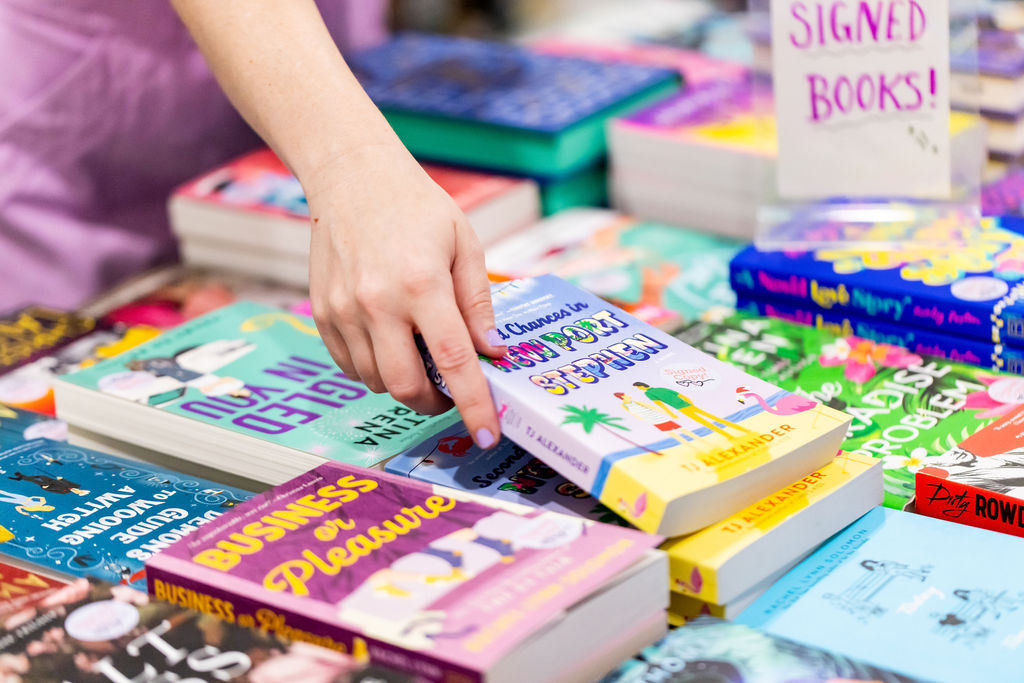Romance bookstores have been popping up all over Southern California, demonstrating that there’s a hot new commodity in town: the happily-ever-after.
Bookstore Romance Day is August 9 and while just a few years ago this may have been celebrated at either of the only two romance bookstores in the country – The Ripped Bodice in Culver City or Love’s Sweet Arrow in Chicago – it’s 2025, and there are now more than 67 brick and mortar bookshops in America catering to novels rife with steamy rendezvous.
And business is booming.
Katie Mullin opened In Bloom Bookery in Old Town Temecula on March 16 after she had a hunch that others in her town might be yearning for the same thing she was – a physical store where a bookseller could point you in the direction of your next book boyfriend. A place where a community of romance readers could link up for author events and book clubs.
“That Sunday we opened, it was crazy,” she said during a recent call. “We had over 1,000 people lined up. Some people waited in line for three and a half hours. We were running water and sunscreen down the line the whole day.”
“We sold about 80% of our books; the shelves were really bare at the end of the day,” Mullin continued. “It was really exciting, but it was also like, ‘Whoa, now we’ve got to restock.’ It was a surreal moment.”
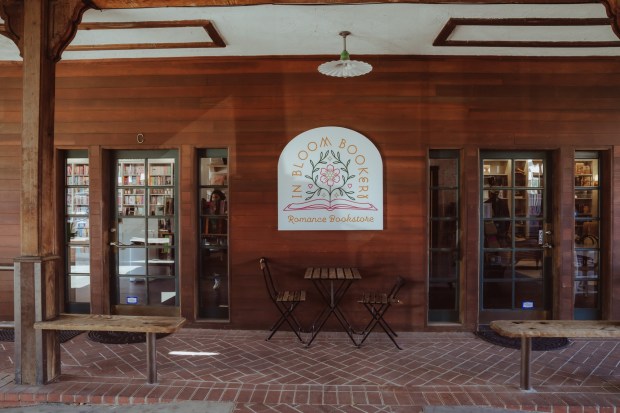 The exterior of In Bloom Bookery, which opened in Old Town Temecula in March. (Courtesy of Katie Mullin.)
The exterior of In Bloom Bookery, which opened in Old Town Temecula in March. (Courtesy of Katie Mullin.)
Mae Tingstrom, who opened Ventura’s Smitten bookshop over Valentine’s Day weekend in 2024, recalls telling herself, “If you build it, they will come,” as she worked tirelessly to get her dream shop up and running.
For Tingstrom, specializing in romance was an obvious choice.
“Personally, I just love to swoon,” she joked during a recent call.
As for the wide appeal of the genre that’s become a billion-dollar industry, Tingstrom chalks it up to the genre’s ironclad promise that everything will work out in the end.
“Life can suck, and we all want to have an escape from our realities, and if it’s actually a genre romance, it has to have a happy ending – that’s the appeal.”
“We’re sexual beings, and I think we as a society kind of pretend that sex doesn’t exist for whatever reason,” Tingstrom added. “And I think a lot of these romance books speak to our own human nature that maybe we’re not able to fully express.”
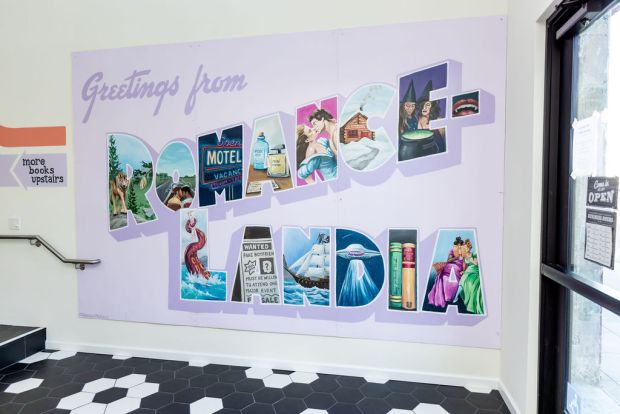 A painted mural inside Meet Cute Romace Bookshop in La Mesa, Ca. (Photo credit: Katie Fisher)
A painted mural inside Meet Cute Romace Bookshop in La Mesa, Ca. (Photo credit: Katie Fisher)
A genre’s sullied reputation
It’s no secret that reading romance lit hasn’t exactly been widely respected by the literati at large. Many readers of the genre have considered it a “guilty” pleasure, albeit due to what bestselling romance author Maya Rodale found when researching the matter: internalized scrutiny and misogyny.
In the ’90s, the largely female romance readership could expect to get side eye when someone spotted Fabio on their paperback cover, and even today, women who post “shelfies” on platforms like X have been slammed in the comments for the romance novels that fill their bookshelves.
Rodale dug into the history of this disrepute in her 2015 book, “Dangerous Books For Girls: The Bad Reputation of Romance Novels, Explained,” finding that the source of the scorn dated back to the era of Jane Austen, and the fear that women would take their cues from these “ridiculous” books, that they might adjust their standards in a way that made society — i.e., men — feel uncomfortable and threatened.
“Whether we call them gothics, domestic fiction, sentimental novels, chick-lit, trashy books, romances, or romance novels, affordable novels written by women, about women, and for women have promoted powerful and revolutionary messages to women for centuries,” Rodale wrote.
As she researched what was originally her master’s thesis, but ultimately became her book, Rodale conducted two surveys among both romance readers and non-romance readers and found that 51% of readers have felt they should keep their romance reading secret. Her survey also found that 89% thought romance readers are looked down upon, and 67% thought romance novels don’t get the respect they deserve.
While Rodale’s surveys predated the 2015 release of her book, she recently released a new and expanded version with an updated foreword titled, “Are Romance Novels Still Dangerous Books?” In the update, she reported that “…these days, there is a willingness for our culture at large to engage with the romance genre with a little less snark and a lot more open-mindedness … romance readers are more openly unapologetic in their love for the genre and have significantly less tolerance for other people’s bull—- about our reading habits. Good. One simply cannot get away with slagging off the genre without attracting the ire of Romancelandia.”
Her message was clear: Romancelandia has become an economic superpower, and its citizens will no longer tolerate your scorn.
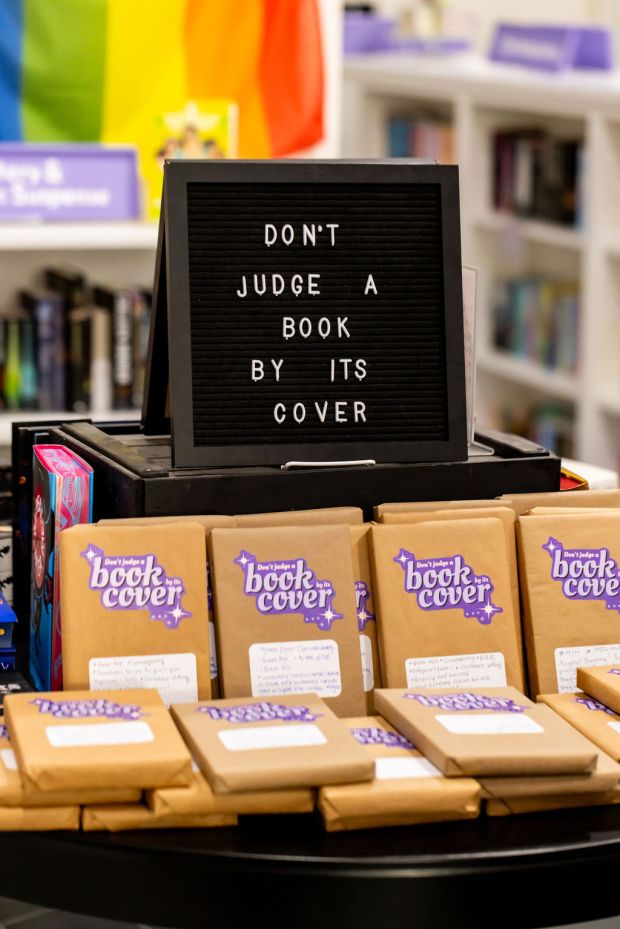 A display of blind dates with a book packages for sale at Meet Cute Romace Bookshop in La Mesa, Ca. (Photo credit: Katie Fisher)
A display of blind dates with a book packages for sale at Meet Cute Romace Bookshop in La Mesa, Ca. (Photo credit: Katie Fisher)
The power of women
When asked if the genre was finally getting its due respect, Emilia Rhodes, executive editor at Atria Books, an imprint of Simon & Schuster, which specializes in romance and romantasy, said that the market respects its success. “Obviously, the market is huge, but I think what we’re seeing is, you can’t underestimate the economic power of women.”
“They’re really showing, ‘This is what we want to read. This is what we want to do, and we enjoy this. We think it’s fun, we think it’s worth spending our money on.’ … Therefore, everyone has to pay attention, because it’s driving the market so much. I have found that it really has brought in a lot of new readers who maybe hadn’t read fantasy before, or romantasy or romance. People are now seeing it in a whole new light.”
Not only are people seeing it in a new light, but they’re seeing it everywhere: Bookstagram, Booktok, pop-up bookmobiles, they’ve all got romance on the brain, and social media has helped romance readers find each other, shed the outdated shame, and feel a sense of community.
Becca Title opened the country’s third romance bookstore in San Diego’s North Park in 2022. Last year, she moved Meet Cute Romance Bookshop to a larger space in La Mesa. “I’ve been a lifelong reader of the genre,” Title said during a recent call. “It’s also a genre that hasn’t always been a fit in indie bookstores. A lot of Indies historically don’t stock it on the theory that it doesn’t sell, when I think the issue is that they didn’t have any expertise in it. They weren’t welcoming to that segment of readers, and so it wasn’t selling for them. Definitely, it does sell.”
“It just was largely selling in mass markets, in grocery stores, in big box stores, in places that didn’t have the cache and prestige of other places where books are sold,” Title continued. “But I think that is changing because of the broad popularity and the ability for people to find each other online and talk about it.”
Title said that while traditional publishing has upped its game by publishing more diverse stories in the last five years, there are still improvements to be made. “That’s where indie publishing and self-publishing are so important, and it is also a space where the large publishing houses still have a lot of work to do. Not only in telling queer stories, but in telling stories about characters of color and giving contracts to authors of color to be able to tell those stories.”
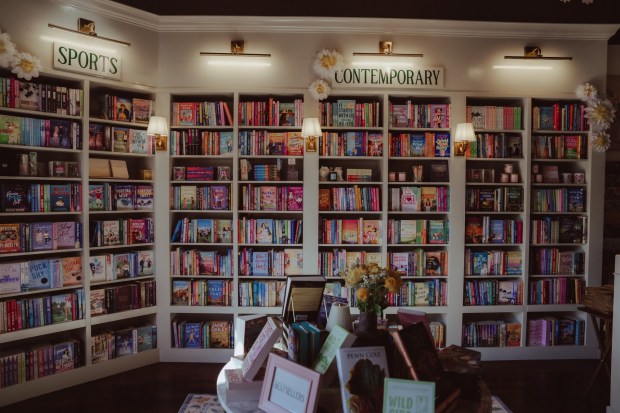 The interior of In Bloom Bookery which opened earlier this year in Old Town Temecula. (Courtesy of Katie Mullin.)
The interior of In Bloom Bookery which opened earlier this year in Old Town Temecula. (Courtesy of Katie Mullin.)
Romance builds community
Stephanie Pao, who opened the mobile book truck The Fleuria in March, is proof that the romance community is strong and thriving. She frequently posts up across the South Bay, Long Beach and Culver City at night markets, breweries and even flower shops. She also hosts a variety of events like audiobook walking meet-ups, social book clubs and one of her most popular, a book swap where romance readers meet up to trade their recent reads.
“There is a very vibrant community in L.A. who are very passionate about books and connecting over them,” she said during a recent call. “Romance readers are the most voracious readers, so I often see people buying many books at once or coming back (very) frequently. It’s really fun to be a part of this community that not only loves books, but voraciously loves books.”
While there are now brick-and-mortar romance bookshops popping up not just all around Southern California, but across the globe, Culver City’s The Ripped Bodice was the first romance bookstore in the country. Sisters and co-owners Leah Koch and Bea Hodges-Koch opened the bookshop in 2016 following a successful Kickstarter campaign. In 2023, The Ripped Bodice opened its second location in Brooklyn.
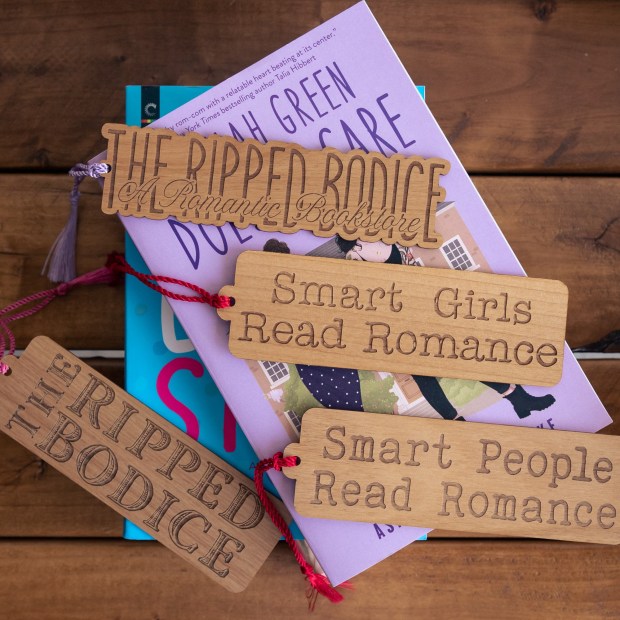 Bookmarks sold at The Ripped Bodice. (Courtesy of The Ripped Bodice.)
Bookmarks sold at The Ripped Bodice. (Courtesy of The Ripped Bodice.)
“Romance gives people hope,” Leah Koch said via a recent email exchange. “No matter how messy or complicated the journey, you know you’re headed toward something good — and that’s a powerful thing, especially in the world we live in. Plus, romance isn’t one thing; it contains multitudes. There’s something for everyone, whether you want to laugh, cry, swoon, or scream into a pillow.”
“The most rewarding part has been watching people walk into the store and immediately feel seen. Romance readers are so often underestimated or dismissed, and getting to create a space that validates their taste, celebrates their joy, and treats their stories with the respect they deserve — that’s the heart of it for me.”
And unlike some one-click online retailers, these romance bookstores are a part of the community they serve.
“Over the years, we’ve gotten to be part of people’s real love stories too — engagements, big first dates, babies, new jobs. It’s a huge privilege to be woven into the fabric of people’s lives like that.”
Originally Published: July 30, 2025 at 9:30 AM PDT
